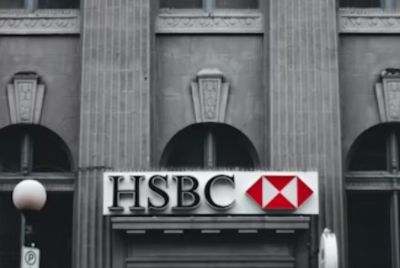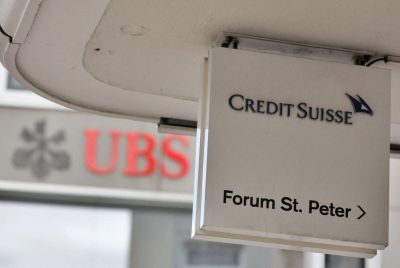Blockchains at Payments Innovation: SETL shines, 11:FS takes a stand and DWP tests GovCoin
Peter Randall, CEO of SETL, was joined by Simon Taylor, co-founder of 11:FS, on a fiery blockchain panel.
Peter Randall of SETL, the institutional payment and settlement blockchain, put in a solid shift yesterday (4 July) at a technology panel that concluded the Payments Innovation Conference 2016.
Randall pointed out that every decade or so some seismic technological change happens to financial services. In the 1970s it was SWIFT; in the 1980s share certificates moved to electronic ledgers; the 1990s was the decade of RTGS systems running in confluence.
Regarding the 2000s, Randall said this was when we saw 21st technology hit the trading space. "I had the privilege of founding Chi-X, which today is the biggest stock exchange in Europe – bigger than the LSE and Deutsche Borse put together.
He said that over the next couple of years SETL aims to do to the back office, post-trade space, what 21st century technology has been able to do to trading.
SETL has one big advantage over lots of other blockchain proposals, said Randall. "We have demonstrated this actually working, which is pretty unique in the blockchain space. A lot of people have ideas but haven't actually demonstrated a working chain."
Sticking with practicalities, he added: "You have got to able to move real world assets, real world money. You are not going to use some sort of coin; you are not going to use some sort of token that's been invented by a fintech company.
"We've got a great way of moving money. We call them yen, dollars, euros, pounds. Those have existed for a very long time and work very well, thank you very much."
Other essentials are speed and capacity. Randall said if you combined all the UK's delayed net settlement systems – BACs, Faster Payments, LINK, plus all other transactions that go through RTGS – it comes to about 35 million transactions per day.
"SETL on a single chain can do over 100 million transactions. And, importantly, it can link chains together. So if you need to do 200 million transactions, we can have two or three chains. They can talk to each other."
Blockchains are not everyone's cup of tea, and some delegates expressed doubts about their silver bullet potential. Randall hammered home the value of reconciliation alone, when done using a blockchain.
He said: "Let's just look at the settlement of securities. This involves eight, maybe 10 different databases; you have a database if you are a broker; you would definitely have a database at the exchange. The CCP would need a database – the reconciliation problem becomes quite big. Then of course you get another database, that this time is at the custodian; then you have sub-custodians, they have got to have a database. That all needs to be reconciled.
"Oliver Wyman, for whom I hold no candle, said $65bn to $80bn a year in those expenses. Now that adds up to about 10 basis points. In terms of your pension that is a lot of money. And that is before you start to think about the vast amounts of money that banks and other financial institutions have to hold as capital or liquidity to make those payments."
Also speaking was former Barclays Blockchain innovation tsar Simon Taylor, who recently co-founded distributed ledger consultancy 11:FS.
Always illuminating, Taylor fielded tweets and comments flashing on a screen above his head. He said: "There's a lot of things that a centralised database can do perfectly well. The question is what are you trying to design, for what business requirements?"
He said blockchains can be thought of as a "multi-administrative database" model, which uses digital signatures and smart contracts in a shared and inclusive manner that constitutes a new paradigm.
"Traditionally there was two ways to solve a problem: way number one was you centralised; way number two was you standardised.
"At the risk of quoting Tony Blair – which I will hate myself for – blockchain gives you a genuine third way. But not a third way as one organisation; it's a third way as an industry. It's a way of redesigning market structure. And that piece is really lost on a lot of people.
"Blockchain, when you really get into to the weeds, when you spend hours and hours looking at this, when you do it with the best scientists in the world, is a genuinely novel and unique and interesting way to solve those challenges in ways that we couldn't do before, with better benefits than we had before."
The big blockchain news at the conference that morning was a trial being carried out by the UK government's Department for Work and Pensions, using a Blockchain design to disburse benefits. This is happening in Manchester.
Conservative peer Lord Freud, the minister of state for welfare reform, said payments made by nine benefit claimants are currently being recorded using blockchain technology as part of a "small scale exploration of behavioural effects".
Freud said more individuals have agreed to join the DWP trial, which has been developed in partnership with GovCoin — a UK-based fintech start-up — as well as Barclays, energy giant RWE npower and University College London.
"We started a small trial in the north west, designed to see if we can send welfare payments using this technology, and more importantly, to see if people reliant on welfare payments would benefit from this approach," reported Blockchain Briefing.
© Copyright IBTimes 2025. All rights reserved.






















